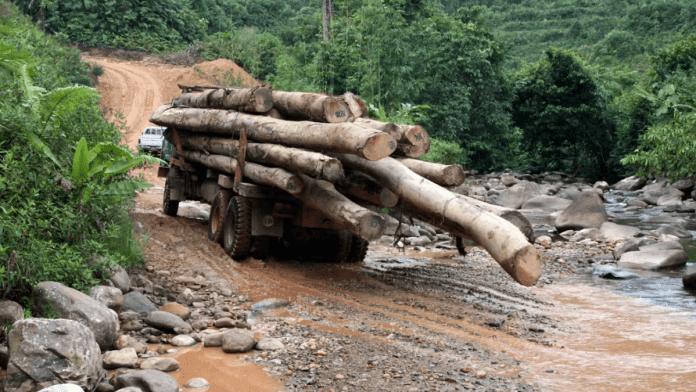News in Brief:
– Illicitly constructed “ghost roads” are accelerating deforestation and threatening local ecosystems in Southeast Asia, posing a significant risk to indigenous communities and agricultural livelihoods.
– Meticulous satellite mapping efforts have revealed the extensive presence of these clandestine roads, highlighting the urgent need for proactive conservation measures and technological solutions.
Unmapped and illicitly constructed roads, known as “ghost roads,” are wreaking havoc on rainforests in Malaysia, Indonesia, and Papua New Guinea. This rampant road building poses a severe threat to local ecosystems and indigenous communities, leading to deforestation and loss of biodiversity.
Ghost roads facilitate illegal activities such as logging, mining, and poaching by providing access to once-remote areas. This unrestricted access results in the destruction of forests, disruption of native ecosystems, and displacement of indigenous peoples. Consequently, countries in Southeast Asia suffer significant economic losses, with timber theft alone costing billions annually.
Uncovering the extent of the issue
Through meticulous satellite mapping efforts, researchers have identified a staggering prevalence of ghost roads across the Asia-Pacific region. These roads, absent from official records, surpass mapped roads in length by multiples, indicating the scale of clandestine activities.

With the emergence of ghost roads, deforestation rates skyrocket, directly affecting local farmers and communities reliant on forest resources. The density of roads emerges as a critical factor contributing to forest loss, exacerbating environmental degradation and threatening agricultural livelihoods, the study finds.
Implications for sustainable development
The proliferation of hidden roads poses a significant challenge to conservation efforts, particularly within protected areas. Despite protective measures, illegal road construction persists, perpetuating forest destruction. However, identifying and managing these problem is essential for mitigating environmental harm and safeguarding biodiversity.
Integrating ghost road data into mapping tools reveals the extensive human impact on rainforests, emphasising the urgency of addressing this issue. While current mapping efforts rely on labour-intensive methods, ongoing research explores artificial intelligence (AI) solutions to achieve real-time monitoring.
Efforts to combat ghost roads align with global initiatives for sustainable development, aiming to balance economic progress with environmental preservation. By enhancing surveillance and enforcement measures, stakeholders can mitigate the adverse effects of clandestine road construction on local communities and ecosystems.



